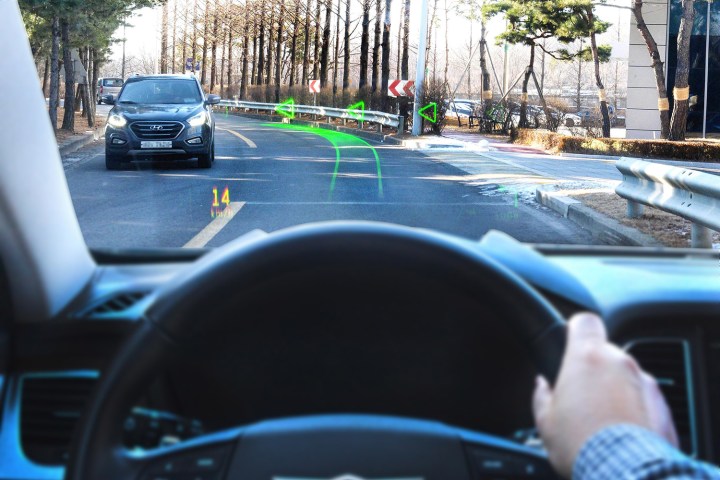
No more looking down at a screen in the console for directions when you’re driving — Hyundai has unveiled a futuristic head-up display (HUD) for cars at CES 2019. The Holographic Augmented Reality (AR) Navigation System can show information like directions and safety warnings that appear in front of the driver’s eyes, overlaid onto the road in front of the car.
The demonstration car is a Genesis G80 that is on display at the CES booth of WayRay, a holographic AR technology company based in Zurich. The holographic augmented reality navigation system projects an image onto the actual road, adjusted according to the viewing angle of the driver to make sure that it is correctly aligned. The virtual image is just over one meter by three meters and is projected at a distance of 15m from the driver’s eyes.
More CES 2019 coverage
- Baby, you can’t drive my cube: All the insane self-driving lounges at CES 2019
- Ford wants all of its cars to ‘talk’ and ‘listen’ to each other by 2022
- Bosch cautiously moving full-speed ahead with self-driving car tech
- Mercedes-Benz gives the 2020 CLA the star treatment at CES 2019
This makes it even more accurate than a traditional head-up display, as HUDs project a reflected image indirectly through a screen on the dashboard, while the holographic system projects the image through the windshield. The AR system does not require the driver to wear a headset, and allows them to see information through the windshield without taking their eyes off the road.
The primary features of the AR system being shown off are in the area of navigation, with information on lane guidance, destination points, and current speed shown in the AR environment. But there are safety features too, with lane-departure and forward-collision warnings.
In the future, Hyundai and WayRay want to expand the system to give further information on the display showing people, objects, buses, bicycle lanes, and crosswalks, and also to incorporate more safety features like a rear side warning system and the Highway Driving Assist (HDA) system. They also intend to take advantage of developments in vehicle-to-everything technology to incorporate traffic signals, surrounding vehicle information, and road and weather conditions into the AR environment.
“As the automotive market is undergoing a profound AR technology-driven transformation, major automakers are quickly adopting AR solutions to find another competitive edge,” WayRay CEO Vitaly Ponomarev said in a statement. “I believe the strong partnership with Hyundai will help us scale up our deep-tech innovation to build customer-centric solutions at a meaningful scale and make driving more comfortable and safe for everyone.”



